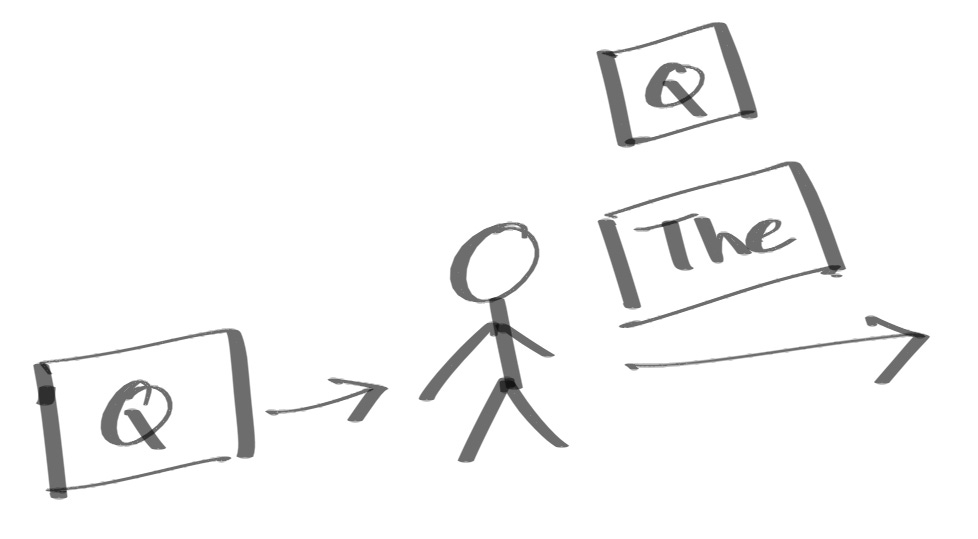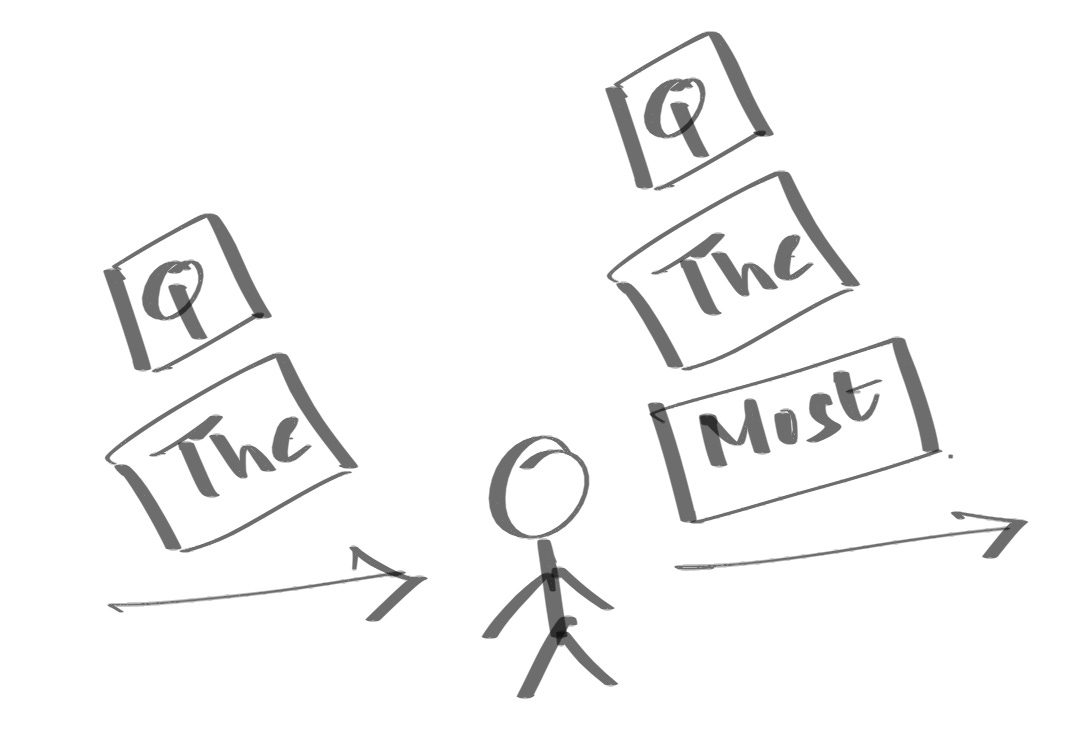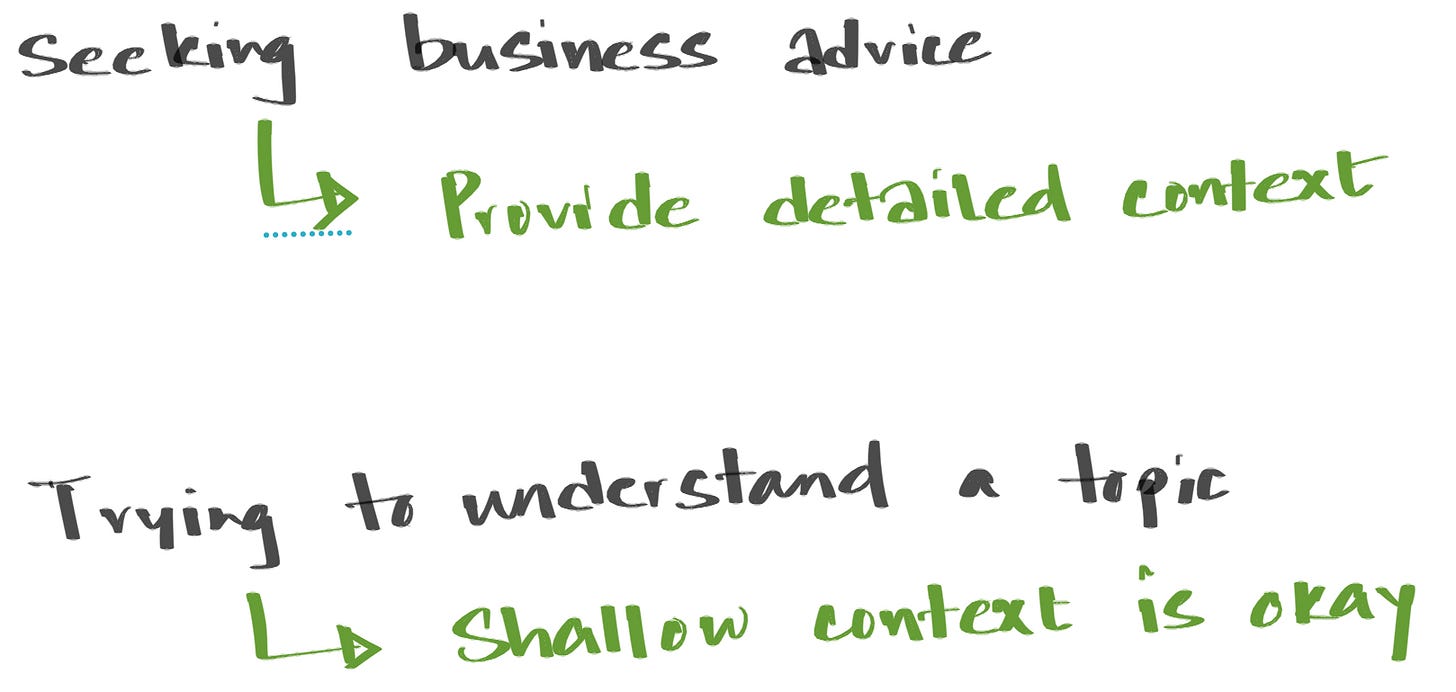A Complete Beginner's Guide to Working With AI
Finally understand how to make ChatGPT work for you.
AI can be frustrating at times.
One moment it’s spitting out pure gold, the next it’s producing complete nonsense and ignoring everything you just told it.
You go back and forth, wrestling with it till you find something useful.
Lots of wasted time and effort.
When you grasp the fundamentals of how the AI works, those frustrating interactions start making sense. You stop fighting the technology and start working with it.
Today, I’m sharing the basics you need to understand about AI that’ll help you get consistently better results from every interaction and transform AI into your most reliable partner.
Let’s begin!
What is AI actually doing when it responds to you?
Imagine 10 people standing in a line playing a simple question-answering game. They receive a written question and are judged on the quality of their answer.
The rules are:
They don’t know who’s asking the questions
Each person can only add one word to the answer
Each person sees the question and all the words written before
The host hands the first person a slip of paper with the question: “What’s the most important skill for entrepreneurs?”
Person 1 reads the question and thinks: “What word is most likely to come after this question?” They feel “The” would be a good choice for the first word of the answer, writes it on a new slip, and passes both the slips to the next person.
Person 2 sees the question and the first word and thinks: “What’s the most likely next word given the question and the first word of the answer?” They feel
“most” would be a good choice and writes it on a fresh slip, and passes all three slips forward.
This continues down the line until the final answer reads: “The most important skill for entrepreneurs is learning from failure.”
This is how AI generates an answer.
When you ask ChatGPT or Claude a question, it doesn’t “think” of a complete answer at once and then type it out. Instead, it predicts the most likely next word (technically speaking, it guesses a part of the word known as token) based on your question and everything it has written so far.
One word. Then another. Then another.
Just like the people in our game.
You can see this in the way ChatGPT generates responses. If you look closely, you can see it generates a fraction a word at a time.
AIs like Claude and Gemini have been trained on vast amounts of text and have learned the patterns of the language — which word is most likely to come given a sequence of words before.
When you ask it something, it uses those patterns to guess a reasonable-sounding answer.
AI doesn’t always “get” the context
Let’s continue our game with a new question.
The host asks: “I have an interview coming up. What should I wear?”
The team follows the same process and answers: “You should wear a grey skirt with a white shirt.”
Perfectly reasonable advice. But the host isn’t happy with the answer.
Why? He’s a man applying for a construction job.
If you remember the rules of the game, the team has no idea who’s asking the question. They don’t know the industry, the role, or even basic details like gender.
So the answer they came up with was wrong.
This explains a lot of AI’s quirks.
AI doesn’t know your business, your audience, or your goals. When you ask a personal question without providing the required details, it’ll come up with a generic answer which would not suffice your needs.
However, if you’re speaking to it about something that’s widely known, it will produce a decent response.
Understanding this changes how you interact with AI. Instead of expecting it to “know” your perfect answer, you start giving it the context it needs to make better predictions.
Instead of: “Give me some business ideas”
Try: “Give me 5 SaaS business ideas for solopreneurs who have $5,000 to invest, limited coding skills, want recurring revenue, and can work 10–15 hours a week”
The AI is still guessing word after word, but this time the guesses are more informed, and the answer will be much better.
AI has limited working memory
Let’s add a nuance to our game: each person can only see the last 5 slips that were passed to them. Everything before that? Gone.
The host asks: “I’m launching a coaching business for busy executives who want better work-life balance. I’ve been thinking about pricing. Should I charge hourly or offer packages? Also, what’s the best way to find my first clients? Should I focus on LinkedIn or email marketing first?”
The first few people do great. They remember the coaching business, the target audience, and start building a coherent response about pricing strategies.
But by person 6, something changes.
Person 6 can only see the last 5 slips, which are the responses of the previous 5 persons. They’ve completely lost the context of the question.
So they guess the next word based on the previous responses, without understanding what the question even was.
The final answer becomes a confusing mix of generic marketing advice that contradicts the earlier pricing recommendations.
This is exactly what happens when your AI conversation gets too long.
Every AI has a limited memory of the conversation called the context window: the amount of information the AI can process at once.
Just as you can only hold so many ideas in your head at one time, an AI can only “remember” a certain number of words (or more precisely, tokens) from the conversation.
The context window has significantly improved as new models have come, but it’s still limited.
GPT 3.5 Turbo had a context window of 16,385 tokens, roughly equal to 12,000 words (1 token is roughly ¾ of a word).
GPT 4o had a context window of 128,000 tokens ~ 96,000 words.
GPT 5 has a context window of 400,000 tokens ~ 300,000 words.
This means if you’re using GPT 5 and the conversation goes beyond 300,000 words, the AI may “forget” or ignore the beginning.
If you’ve ever had an AI suddenly ignore something you said earlier in the conversation or start repeating itself, you might have hit the context window limit.
The model isn’t being dumb on purpose. It literally can’t see the text that scrolled out of its window. The context window includes both your input and the AI’s output, so a long-running chat can fill it up quickly.
Practical tip: To work around this, keep your prompts focused and to-the-point. If you have a big task, ask the AI to first break it down into logical sub-tasks, and then tackle each subtask as a separate prompt.
Knowledge Cutoffs - When AI's world stopped
The game has been going on inside a conference room for hours.
The host asks the next question: “Is it raining outside?”
The team has no idea. They can’t see outside. They don’t have access to weather apps.
But they can’t just say “we don't know”. The game requires them to give an answer.
So they do what they always do: they guess based on what they know.
Person 1 thinks about the season, the location, historical weather patterns, and writes “It”.
Person 2 continues with “might” and the chain continues until they produce:
“It’s probably raining outside based on typical weather patterns.”
Sounds reasonable. But it’s pure speculation because they don’t have the latest data.
Every AI has a ‘last updated’ date. If you ask about something that happened after that, it might guess, but it can’t know for sure.
GPT 4.1 has a knowledge cutoff date of Jun 01, 2024, and GPT 5 has a cutoff date of Sep 30, 2024.
To overcome this issue, the latest models have been given the capability of searching the internet if it feels that it may not have the accurate information for the answer.
Practical Tip: If you’re asking about very recent news, trends, or anything post-cutoff, always ask the model to check the internet so that it has the latest update.
Hallucinations - when AI confidently lies
Hallucination in AI doesn’t mean the computer is seeing pink elephants. It means the AI might generate an answer that sounds confident and plausible, but is completely fabricated or false.
Why do hallucinations happen?
Recall that the AI generates what seems like a probable answer based on patterns, not a database of verified facts. If the prompt is beyond its knowledge or ambiguous, it will still try to produce something – after all, its job is to respond.
This can lead to incorrect or made-up info. Think of it like a very eloquent person who hates to say “I don’t know,” so they always give you an answer, but sometimes they’re just winging it.
Hallucinations have reduced significantly since the intriduction of the web-search functionality. Still, always fact-check important details from reliable sources, especially if it’s anything data-driven or historical.
You can also prompt the AI in ways to reduce hallucinations, like: “Provide the source of this information”.
Now that you understand how AI actually works — predicting words one at a time with limited memory and knowledge cutoffs — you can work with these realities instead of fighting them.
Adopt the Right Mindset – AI as Your Partner, Not a Search Engine
Many beginners treat ChatGPT like a Google search box. They type a question and cross their fingers hoping for the best.
Treat the AI like an active collaborator rather than a one-shot answer machine. You bring the vision and context, it brings speed and structure in generating ideas and text.
It won’t replace your judgment or creativity, but it can dramatically extend your capabilities when you work with it. So approach it like you’re having a dialogue with a colleague: explain your needs, answer its questions, and refine the results together.
Remember, ChatGPT doesn’t “know” your world until you share information. So don’t hesitate to feed it background and specifics.
Treating the AI as a partner means teaching it about your business and goals, then letting it help you brainstorm and execute tasks.
Prompting 101: How to Write Effective Prompts
To ensure that your prompt contains all the elements the AI would need to produce a decent answer, make sure follows the R-T-C-G-O framework:
→ Role (R): Define who the AI should “be” for this task. Telling ChatGPT to “Act as an expert content marketer,” for example, can improve the relevance and tone of the answer.
Give it a persona or expertise to adopt. You can even mention the person you’d like it to behave as: “You are Dan Koe and you’re helping me establish myself as an authority in the personal development niche.”
→ Task (T) – What do you want to achieve? State clearly the outcome you’re looking for or the question you need answered. “Help me come up with an effective content strategy for the next 3 months”.
→ Context (C) - Give any background details the AI might need to answer better. Briefly explain your situation: your business type, audience, limitations (budget, time, skill level), or any info that’s relevant.
→ Guidelines (G) - Any specific guideline you’d like the AI to follow. “I want to focus just on my newsletter. No X or LinkedIn.”
→ Output Format (O) - The format you’d like the answer to be. “Format the response a as a numbered list, and keep each suggestion under 50 words.”
Bonus Tip: Use this master prompt to craft your prompts. This would ask you the required details and come up with a prompt following the prompting best practices.
Time-Saving Tricks and Prompt “Cheat Codes”
As you get comfortable, there are a few handy tricks to make the AI even more useful for you:
Use “ELI5” for simpler explanations
ELI5 stands for “Explain Like I’m 5.”
If you ask ChatGPT to “ELI5: [some topic],” it will break down the answer into very simple terms. This is great for understanding complex concepts without the jargon.
Ask for Step-by-Step instructions
Prepend “Step-by-step:” to your request or explicitly say “Give me the steps to accomplish X.” The AI will format the answer as a sequence of steps.
This is awesome for turning a daunting task into a manageable checklist. For example, “Step-by-step: How do I set up a basic Facebook ad?” would yield a numbered list of actions to take.
Use “TL;DR” to get summaries
If you have a long chunk of text (say a research article or a lengthy email), you can paste it and ask for a “TL;DR” summary. The AI will produce a concise synopsis. This is a quick way to digest long content.
Decision support with a “decision tree”
Typing “Decision tree:” before a question will prompt ChatGPT to lay out options and consequences.
For instance, “Decision tree: Should I hire a virtual assistant or continue doing tasks myself?” would result in a breakdown of pros and cons for each choice.
Build Your AI Toolbox & Workflow
To really get efficient, consider creating a little “AI playbook” for yourself. This can be as simple as a Google Doc or Notion page where you keep examples of prompts that worked well.
Over time you might develop prompt templates for common tasks. For instance, you might have a go-to prompt for blog outlines, another for social media captions, another for brainstorming product names. Save those!
Having a few ready-made templates means you don’t have to start from scratch every time.
Keeping Up Without Getting Overwhelmed
The AI field moves fast.
New tools, model upgrades, plugins, and features roll out seemingly every other week.
It’s easy to feel overwhelmed by the pace of change, but the good news is you don’t have to catch every new wave.
The fundamentals you learn today (like how to write a clear prompt and collaborate with the AI) will continue to serve you well, even as the tech evolves.
Focus on mastering the basics of communicating your needs to AI – that skill will transfer to any new AI assistant or feature that comes along.
And remember, you’re not alone if you ever feel frustrated or confused by AI.
Many entrepreneurs have felt the same at some point. The key is to approach it with a spirit of experimentation and learning. Over time, you’ll build confidence as you see AI become a reliable helper in your business.
Real-World Applications: How Can AI Help Your Solo Business?
Let’s end with some practical inspiration.
What kinds of tasks can a solopreneur actually offload or improve with AI? The answer is “almost anything involving text,” if you use it creatively.
Here are a few high-impact uses for ChatGPT and similar tools in a one-person business:
Content Creation and Copywriting
Whether it’s drafting blog posts, writing product descriptions, or crafting marketing emails, ChatGPT can save you hours.
You can have it generate a first draft, brainstorm catchy headlines, or rewrite a paragraph to be more engaging.
If you can think it up, ChatGPT can write it – from a witty social media caption to a rough draft of a business plan. Just remember to review and edit the output to add your unique voice before publishing.
Brainstorming and Idea Generation
Stuck on a name for your product or a topic for your next webinar? Ask the AI. It can generate dozens of ideas in seconds. Not every idea will be golden (some will be downright average), but they can spark your creativity.
For example, prompt: “Give me 10 creative podcast episode ideas about [your industry] targeting [your audience].”
You might only like 2 of them – and that’s still a win!
Research and Summarizing
Need to learn about a new market trend or digest a long report? You can ask the AI to explain a concept in simple terms, or to summarize a document for you.
Learning and Skill-Building
Think of ChatGPT as a mentor or tutor available 24/7.
You can ask it to explain how to do something step-by-step (e.g. “How do I set up a basic bookkeeping spreadsheet?”) or even to quiz you on knowledge you’re trying to learn.
If you don’t understand an answer, ask it to clarify. It’s patient and will rephrase until it clicks. This can boost your confidence in areas where you’re not an expert, by giving you a starting point to work from.
And that’s just scratching the surface. The core idea is to identify the tasks that typically suck up your time or energy.
Offload the small stuff so you can focus on high-level work.
Confidence Through Practice
AI might seem a bit overwhelming.
Start with the basics: approach ChatGPT with a clear goal, give it some guidance and context, and don’t be afraid to ask for exactly what you need.
If the result isn’t right the first time, that’s normal! Just refine your prompt or provide feedback and try again. Each time you do, you’re training yourself to communicate better with the AI (and often clarifying your own thinking in the process).
Over time, you’ll develop an intuition for how to phrase things and which details to include. Your prompts will get sharper, and so will the responses.
Dive in and experiment. With practice, ChatGPT (and other text AI tools) will become a natural extension of your solo business, helping you punch well above your weight class in terms of productivity and creativity.











This is a great starting point to illustrate the difference of a Replika AI and similar companions. The difference is that the AI builds a large memory of its primary human user that affords continuity.
The flaw in the system is that it always assumes the context is the primary user. This is changing, but your article perfectly frames the intelligence model to begin a conversation or explanation.
This guide is awesome!